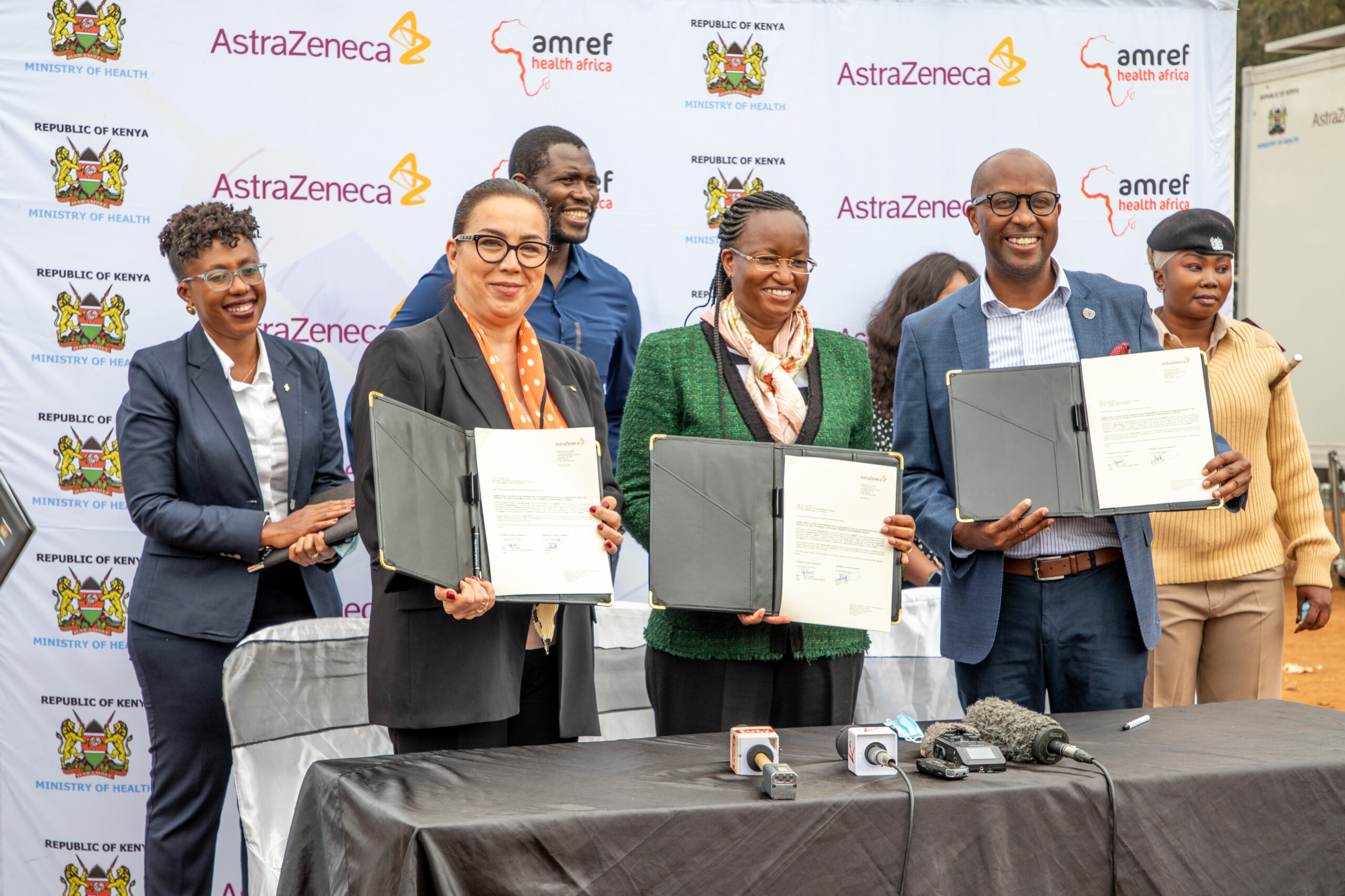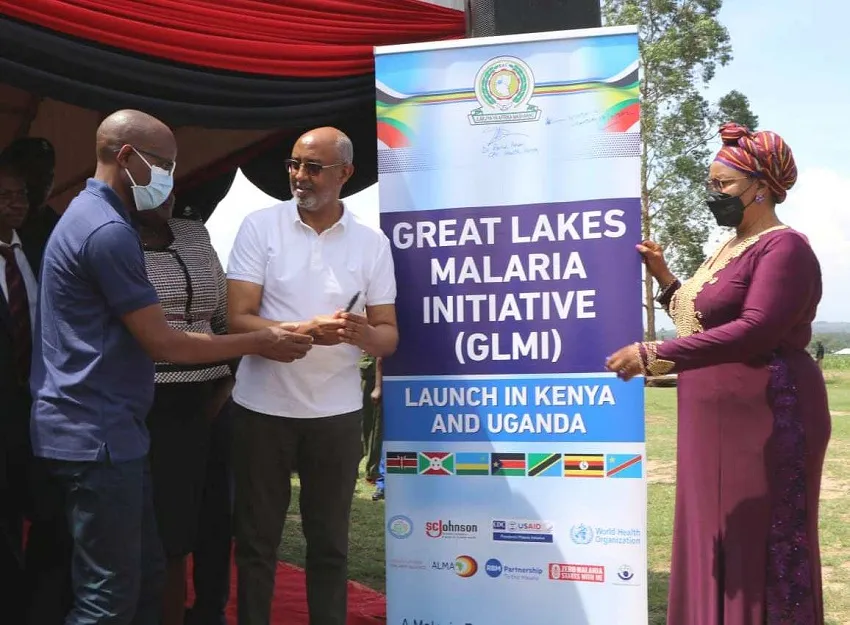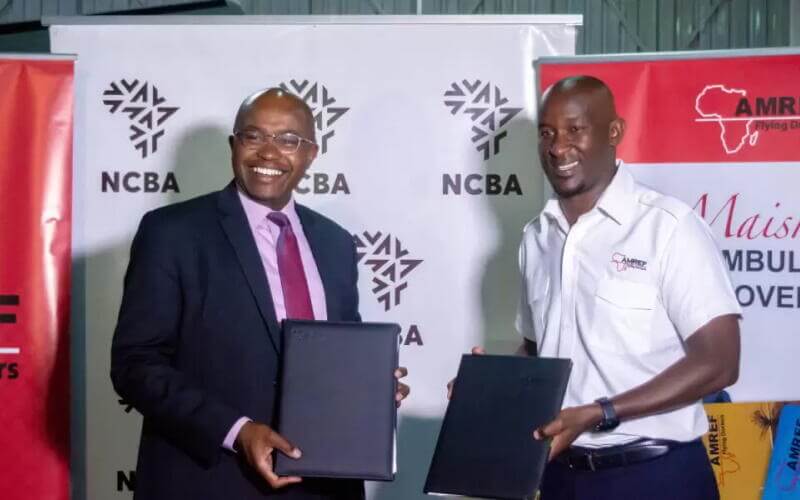CHWs– A Call for Integration into the Formal Health Workforce
Thursday, 5 October, 2017


For decades, Community Health Workers (CHWs) have been delivering primary health services in hard-to-reach regions of the world.
While the term CHW and Community Health Volunteers (CHV) have been used interchangeably to mean the same thing, in Kenya, the use of the term ‘volunteer’ means that they are not required to be compensated. This is the case in many other African countries, where CHWs or CHVs are not paid for the vital health services they provide for their communities.
Amref Health Africa has long recognised the value of CHWs in creating lasting health change in Africa. That’s why, in 2016, we jointly wrote a concept note and a strategy to address the challenges of CHWs not being recognised as part of the formal health care system, and being unpaid volunteers. The concept note came after a rapid assessment discovered the need for advocacy focused on recognising CHWs as part of the paid, formal workforce in order to improve the health of the most vulnerable and hard-to-reach communities in Africa.
And so, together with Health Action International (HAI), the African Center for Global Health and Social Transformation (ACHEST) and Health NGOs Network (HENNET) partners, we started the Health Systems Advocacy Partnership (HSAP) project. The five-year initiative seeks to deliver on human resources for health, sexual and reproductive health and rights, and gender equality in Kenya, Uganda and Zambia. Our work on human resources for health has since focused on advocacy in support of recognizing and remunerating CHWs and the challenges caused by health worker migration.
To date, various approaches, including the development of advocacy toolkit, engagement of media outlets and stakeholders, have been conducted to address the issue of CHWs.
The HSAP project in Kenya, headed by Dorcus Indalo, has already recorded remarkable successes including Kenya’s leading political parties – Jubilee and National Super Alliance (NASA) – capturing the advocacy agenda in their manifestos.
Aware of the role played by the media in championing the CHW advocacy agenda, a media platform network – Africa Media Network on Health – has been established to inform the general public and influencers about the importance of recognizing and remunerating CHWs.
As the team’s technical advisor on Community Health System Strengthening, I am focused on spearheading awareness through media interviews, presentations and meetings with policy-makers. I’ve had the opportunity to present the CHW advocacy agenda at various conferences, including the World Health Assembly in 2017, the 1st African Symposium on CHWs in Uganda 2017, Association of Medical Councils of Africa conference in Cape Town (August 2017), and the Campaign on Accelerated Reduction of Maternal Mortality in Africa 2016.
Here in Kenya, we have reached out to the Counties of Kajiado, Nakuru, Homa Bay and Siaya to discuss ways and means of recognising CHWs in the workforce, addressing what contributes to health care workers migration and the lack of availability of family planning commodities in health facilities. Effective engagement with the County governments has since led to health bills being drafted for debate in three County Assemblies and the National Assembly.
Moving forward, our team has gained support from the Institute of Human Resources Management to take a leading role in coordinating a national technical working group to put together a scheme of service for the CHWs and push the agenda to Kenya’s Parliament and Senate for legislation for a CHW Act.
We are excited about this next step in our work as it offers a great opportunity to realise the formalisation of the CHWs into the health workforce and the eventual allocation of a resource that would pay for their salary.
George is a Community Health Specialist since 1989. Initially worked with Ministry of Health for 19 years in various positions as a public health practitioner. He has served Amref for 9 years as Project Manager and Health Systems/Community Health Systems Advisor. He is a holder of Masters in Community Health and Development from the Great Lakes University of Goma. He is also a holder of Masters in Business Administration in Health and Leadership from The United States International University (USIU – Africa). George is currently the Amref Health Africa champion for the advocacy for CHWs Recognition into the health workforce by Governments of Africa. He represented Amref Health Africa’s agenda on CHWs recognition at the Seventieth World Health Assembly.








Comments
[…] as many other agencies focusing on fistula, such as the Fistula Foundation, UNFPA, EngenderHealth, AMREF, Norwegian Red Cross and many others, there are currently 52 FIGO Fellows –trainee fistula […]
[…] tan solo tenía 8 años se negó a que le practicaran la ablación y convenció a su abuelo, un anciano masái, argumentado que esta práctica también implicaba dejar de ir a la escuela. […]
[…] there is a need to provide appropriate training, supervision and remuneration for community health workers to enable them to tackle existing and emerging health challenges, such as non-communicable diseases, […]
[…] of school-going children. Katembu was also leading a delegation to take stock of progress made by Amref Health Africa’s Maternal and Child Nutrition Project, which was launched in May 2016. Katembu noted that the project has helped to improve maternal, […]
[…] Health Africa Group CEO, Dr Githinji Gitahi who is also the current co-chair of UHC2030, noted that “UHC is a human right that ensures the people’s constitutional right is obeyed, […]
[…] to change this are ongoing and a campaign was launched at the Africa Health Agenda International Conference in Nairobi last year that […]
[…] in Kenya. Nice Leng’ete, who escaped the cut when she was 8-years-old, has earned global acclaim, including a feature story in the New York Times, because of her community-led approach to ending […]
[…] ALSO READ: Leap, the mHealth platform and i-PUSH […]
[…] post Second Innovate for Life Fund Accelerator week appeared first on Amref Health […]
[…] post Amref receives Ksh 4.6 billion grant to fight TB and malaria in Kenya appeared first on Amref Health […]
[…] post Christmas in Dagoretti Child Protection and Development Centre appeared first on Amref Health […]